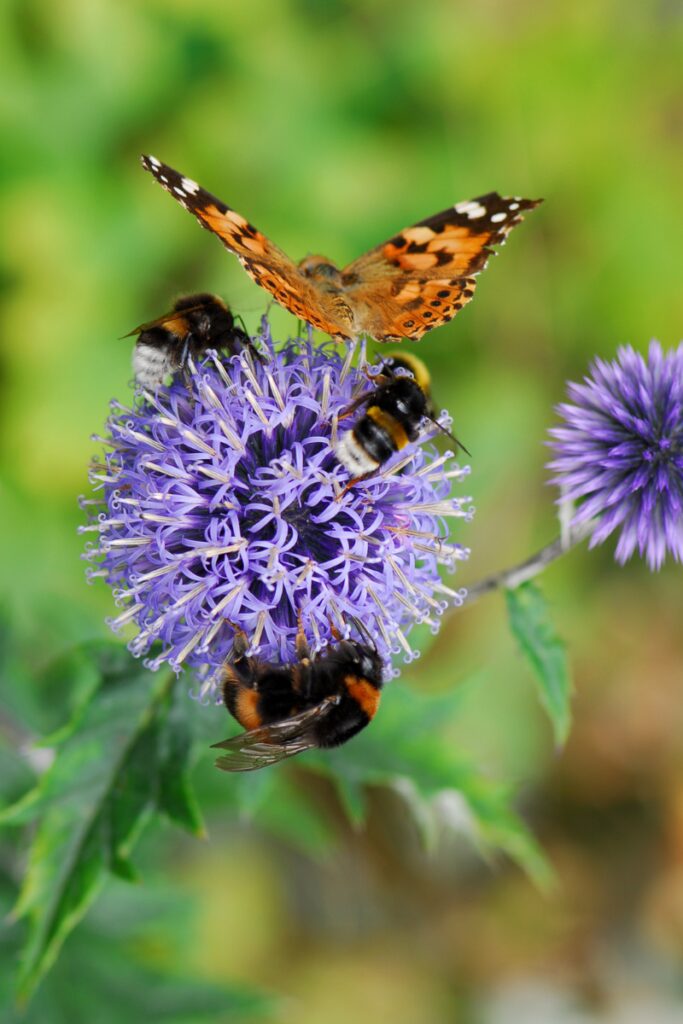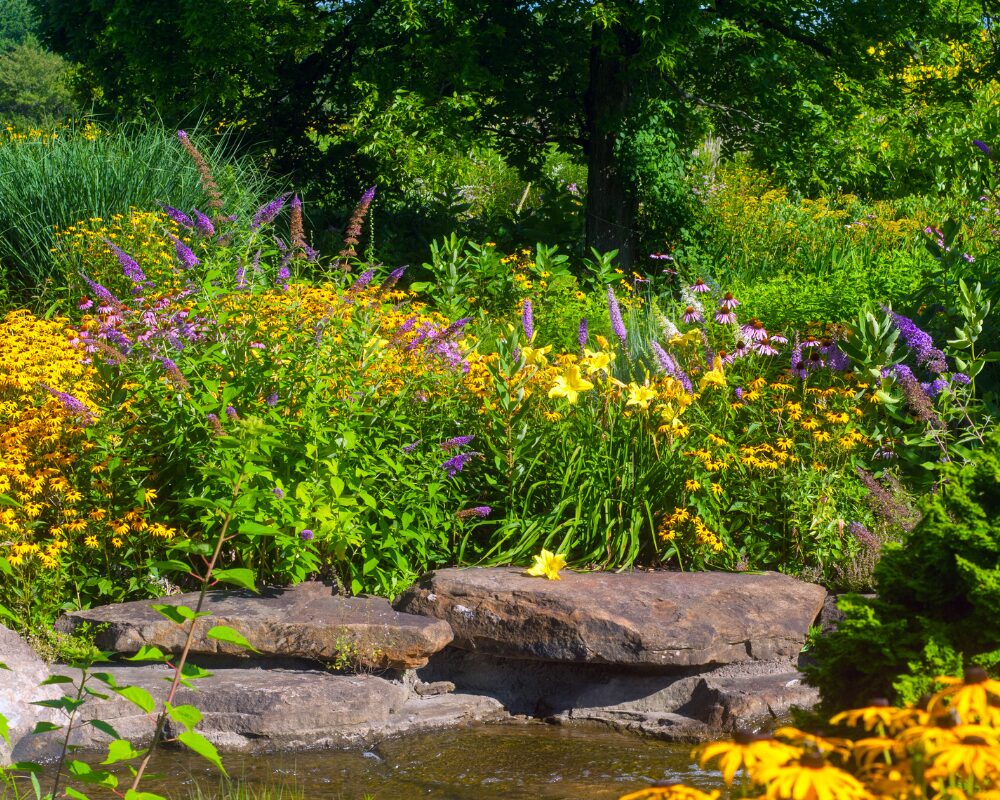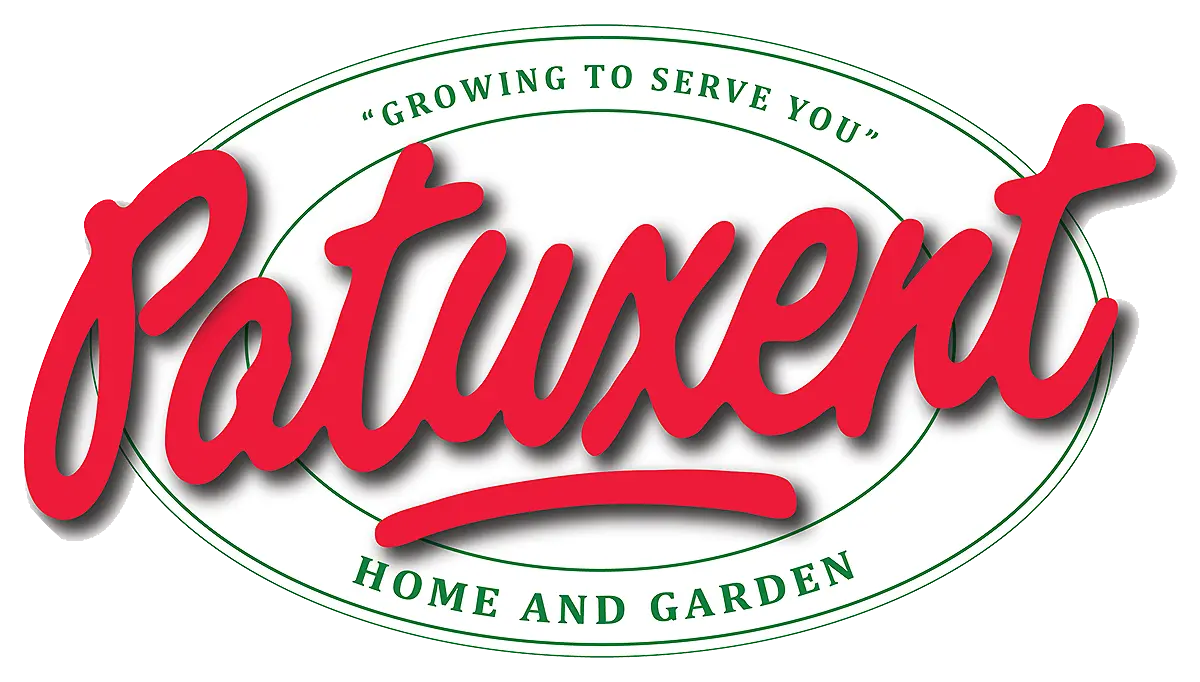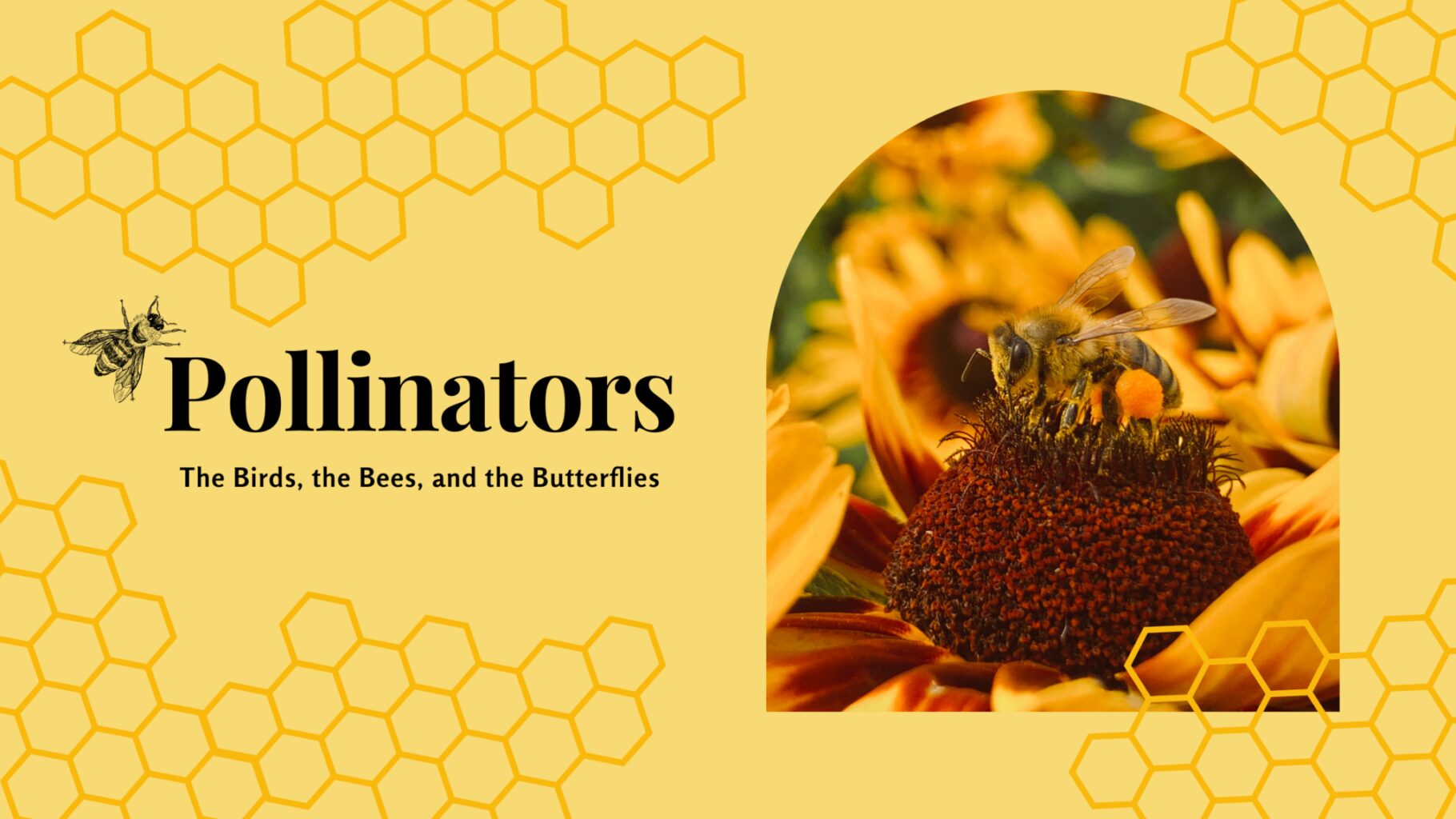Pollination—The Basics
Pollination is the act of moving pollen grains from one flower to another in order to fertilize and eventually produce fruit and seeds. While pollen can be carried from flower to flower by wind, it is more often carried by insects and other animals which rely on these plants for nutrients. Bees, for example, collect pollen on their legs from the stamens—male reproductive organs—and carry it to the stigmas—female reproductive organs—of the flowers it visits. In turn, these plants provide nectar, an essential nutrient, for the pollinators. So, bees get nectar, flowers get pollen, everybody wins. This mutually beneficial transaction is known as a symbiotic relationship, where each party involved relies on the other for survival. In many ways, we too rely on these pollinators to ensure our own survival. While this explanation covers the basics, the act of pollination is anything but. We rely on these little helpers every day to grow our crops, like apples, potatoes, almonds, and even coffee, which keep us fed and happy. Without the help of pollinators, our gardens wouldn’t be nearly as beautiful and abundant as they are.

Types of Pollinators
When we think of pollen, we tend to think of bumblebees, honey bees, and other bee species (rightfully so!). Bees are responsible for the majority of pollination that occurs, and so deserve the recognition. That said, there are other animals which also succeed in giving our flowers what they need to survive.
Birds, namely the hummingbird, despite not having a strong sense of smell, are attracted to the bright, colorful flowers like zinnia. By flapping their wings near a flower, birds succeed in stirring up the pollen that the wind then carries to other surrounding flowers.
Butterflies, like the monarch butterfly, are another common pollinator. Like the bee, butterflies collect pollen on their bodies and carry it from flower to flower. Unlike bees, butterflies have great vision and can therefore see more colors, like red and even ultraviolet light, and so are attracted to different flowers that bees may not be drawn to. Every day, beneficial insects and other animals are working on a micro level to make sure our plants are pollinated. While they might be small, their responsibilities are massive and so it is our job to help give them the best environments to work in.

Mindful Planting
One way to support pollinators is by growing native flowering plants. When we plant native, we are preserving the biodiversity of our landscapes and making sure these animals have a source of nectar and can therefore survive. Because Patuxent Nursery is located in Bowie, Maryland, some native flowers that would make for great additions to our gardens would be butterfly weed, aster, or black-eyed susan. To make life easier, all native plants are clearly marked at Patuxent Nursery, and a quick search should yield the best native plants for your area. Aside from planting native, we should also be looking for colorful options when selecting flowers, as this will also attract the most birds, bees, and butterflies.

Planting a pollinator garden is easy and can even be accomplished if you’re working with a smaller space (see our blog—Pollinator Container Gardens: Attract Pollinators From Your Balcony). When planting a pollinator-friendly garden, one should steer clear of cultivars (lab-created plants) because when they’re created, the ability to pollinate is often sacrificed for more favorable traits like disease resistance. Mindful, intentional planting is one of the best things we can do when caring for and replenishing our garden landscapes. Pollinator populations are dwindling, and so it is more important than ever to be considerate of what we plant.
Props to Pollinators
A majority of plant species rely on pollen to become fertilized and the transfer of pollen from one flower to the next is no small task. These hard workers do so much for us, so it’s only right to give them what they need in return. For more information on planting native, and to see our wide selection of pollinator-friendly plants, come see us at Patuxent Nursery today. Happy Planting!


Leave a Comment
You must be logged in to post a comment.